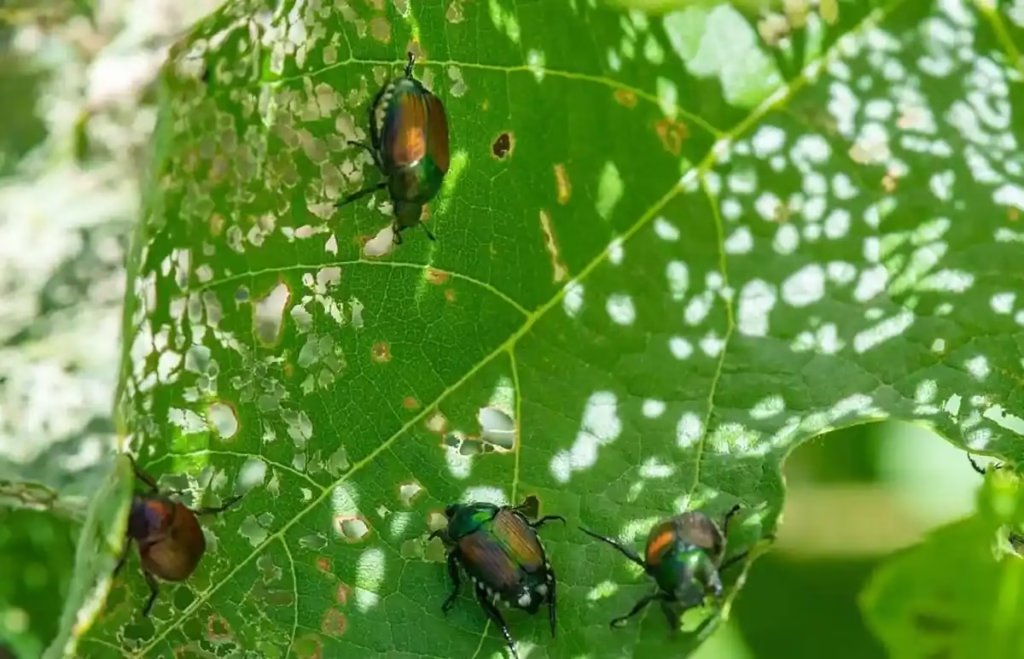
Invasive Japanese Beetles Threaten Washington Agriculture
The Japanese Beetle Infestation, first identified in Washington in 2020, poses a severe threat to agriculture and gardens, particularly in Benton, Franklin, and Yakima counties. The Washington State Department of Agriculture (WSDA) reports over 26,700 beetles were trapped last year, underscoring the pest’s rapid reproduction rate. Experts estimate eradication efforts could span over a decade if immediate action isn’t taken.
WSDA’s Eradication Program Targets Infested Areas
The WSDA has launched a comprehensive eradication program, aiming to treat affected areas starting March 31. Approximately 17,600 property owners in impacted counties are being asked to permit free insecticide treatments using Acelepryn, which targets both adult beetles and larvae. The focus is on high-risk zones, such as turf grass and ornamental plants where these pests thrive.
Community Cooperation is Essential
Achieving 100% community participation is critical to preventing the beetle from establishing permanent populations. Officials emphasize that without widespread cooperation, Washington’s farmers could face costly quarantines and trade restrictions, significantly impacting the state’s agricultural economy.
Economic Implications and Long-Term Risks
Japanese beetles pose a significant threat to key crops like grapes and hops, which are vital to Washington’s economy. If left unchecked, the pest could spread statewide within two decades, affecting agriculture and residential gardens alike. Proactive measures now can prevent these long-term consequences.
Challenges in Japanese Beetle Eradication
Rapid Reproduction and Spread
Japanese beetles reproduce quickly and damage over 300 plant species, including economically essential crops. Their ability to spread via human activity, such as transporting soil or lawn clippings, exacerbates the problem. Major transportation routes like Interstate 82 further increase the risk of infestation in new areas.
Lack of Natural Predators
In the U.S., Japanese beetles lack natural predators, allowing their populations to grow unchecked. This absence of biological control makes eradication efforts even more challenging.
Environmental Conditions and Barriers
While the Cascade Mountains act as a natural barrier, much of western Washington provides an ideal habitat for these pests. The beetles’ ability to adapt to Washington’s agriculture-rich southeastern region heightens the urgency of eradication efforts.
Proactive Steps for Homeowners to Prevent Japanese Beetle Infestations
1. Control Grubs Effectively
Treat lawns with solutions like beneficial nematodes, milky spore, or neem oil during early spring and fall to target beetle larvae.
2. Adjust Lawn Watering Practices
During egg-laying season (June to August), limit lawn watering to create dry soil conditions that hinder egg survival.
3. Utilize Physical Barriers
Install row covers over vulnerable plants to prevent beetle access while ensuring pollinators can still reach flowering species.
4. Select Resistant Plants
Incorporate less attractive plants, such as lilacs, dogwoods, and magnolias, to reduce beetle damage in your garden.
5. Apply Homemade Natural Repellents
Use natural sprays, such as garlic or cedar oil, to deter beetles. A simple garlic spray can be prepared by steeping crushed garlic in boiling water overnight.
6. Manually Remove Beetles
Inspect plants regularly and hand-pick visible beetles, disposing of them in soapy water for effective control.
7. Monitor and Use Traps Strategically
While commercial traps are available, position them away from your garden to lure beetles without attracting more to your plants.
8. Encourage Natural Predators
Attract birds and beneficial wildlife by creating habitats that support natural pest control.
Conclusion
Addressing the Japanese beetle infestation in Washington requires a multi-faceted approach involving government action, community cooperation, and proactive homeowner efforts. By implementing these strategies and supporting WSDA’s eradication program, Washington can safeguard its agriculture and gardens against this invasive pest.
